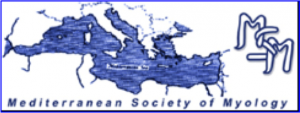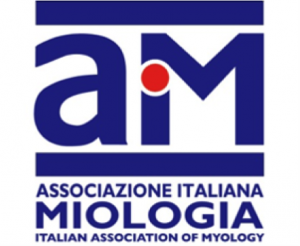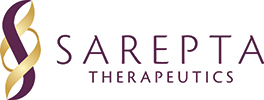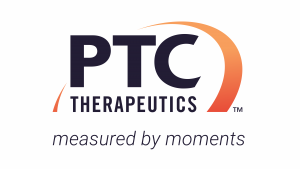Estimating the impact of COVID-19 pandemic on services provided by Italian Neuromuscular Centers: an Italian Association of Myology survey of the acute phase
Eleonora Mauri 1*, Elena Abati 1,2*, Olimpia Musumeci 3, Carmelo Rodolico 3, Maria Grazia D’Angelo 4, Massimiliano Mirabella 5, Matteo Lucchini 5, Luca Bello 6, Elena Pegoraro 6, Lorenzo Maggi 7, Letizia Manneschi 8, Chiara Gemelli 9,10, Marina Grandis 10,11, Angela Zuppa 10,11, Sara Massucco 10,11, Luana Benedetti 10,11, Claudia Caponnetto 10,11, Angelo Schenone 10,11, Alessandro Prelle 12, Stefano C. Previtali 13, Marina Scarlato 13, Adele D’Amico 14, Enrico Bertini 14, Elena M. Pennisi 15, Laura De Giglio 15, Marika Pane 16, Eugenio Mercuri 16, Tiziana Mongini 17, Federica Ricci 17, Angela Berardinelli 18, Guja Astrea 19, Sara Lenzi 19, Roberta Battini 19,20, Giulia Ricci 20, Francesca Torri 20, Gabriele Siciliano 20, Filippo M. Santorelli 21, Alessandra Ariatti 22, Massimiliano Filosto 23, Luigia Passamano 24, Luisa Politano 24, Marianna Scutifero 24, Paola Tonin 25, Barbara Fossati 26, Chiara Panicucci 27, Claudio Bruno 27, Sabrina Ravaglia 28, Mauro Monforte 29, Giorgio Tasca 29, Enzo Ricci 29, Antonio Petrucci 30, Lucio Santoro 31, Lucia Ruggiero 31, Andrea Barp 32, Emilio Albamonte 32, Valeria Sansone 32, Delia Gagliardi 2, Gianluca Costamagna 2, Alessandra Govoni 1,20, Francesca Magri 1, Roberta Brusa 1, Daniele Velardo 34, Megi Meneri 1, Monica Sciacco 34, Stefania Corti 1,2, Nereo Bresolin 1,2, Isabella Moroni 34, Sonia Messina 3, Antonio Di Muzio 35, Vincenzo Nigro 36, Rocco Liguori 37, Giovanni Antonini 38, Antonio Toscano 3, Carlo Minetti 39, Giacomo Pietro Comi 2,33, Italian Association of Myology
1 IRCCS Foundation Ca’ Granda Ospedale Maggiore Policlinico, Neurology Unit, Milan, Italy; 2 Dino Ferrari Centre, Department of Pathophysiology and Transplantation (DEPT), Neuroscience Section, University of Milan, Italy; 3 Department of Clinical and Experimental Medicine, Unit of Neurology and Neuromuscular Diseases, University of Messina, Italy; 4 Scientific Institute IRCCS E. Medea, Neuromuscular Unit, Bosisio Parini, Lecco, Italy; 5 Fondazione Policlinico Universitario “A. Gemelli” IRCCS, Università Cattolica del Sacro Cuore, Rome, Italy; 6 Neuromuscular Center, Dipartimento di Neuroscienze, Università di Padua, Italy; 7 Neuroimmunology and Neuromuscular Disease Unit, Fondazione IRCCS Istituto Neurologico Carlo Besta, Milan, Italy; 8 UO Neurologia, AUSL Fidenza, Parma, Italy; 9 NEuroMuscular Omnicentre (NEMO) - Fondazione Serena Onlus, Ospedale La Colletta, Arenzano, Genoa, Italy; 10 Department of Neurosciences, Rehabilitation, Ophthalmology, Genetics and Maternal/Child Sciences, University of Genoa, Italy; 11 Policlinico San Martino IRCCS-Neurological Unit, Genoa, Italy; 12 UO Neurologia, ASST Ovest Milanese, Legnano, Italy; 13 Institute of Experimental Neurology (InSpe), Division of Neuroscience, IRCCS Ospedale San Raffaele, Milan, Italy; 14 Unit of Neuromuscular and Neurodegenerative Disorders, “Bambino Gesù” Children’s Hospital, IRCCS, Rome, Italy; 15 Center for Neuromuscular and Rare Neurological Diseases, Unit of Neurology, “S. Filippo Neri” Hospital, Rome, Italy; 16 Paediatric Neurology and Neuromuscular Omnicentre Clinical Center, Agostino Gemelli University Polyclinic Foundation, Scientific Institute for Research and Health Care, Rome, Italy; 17 Neuromuscular Diseases Unit, Hospital Città della Salute e della Scienza, University of Turin, Italy; 18 Child and Adolescent Unit, IRCCS Mondino Foundation, Pavia, Italy; 19 Department of Developmental Neuroscience, Stella Maris Institute, Pisa, Italy; 20 Department of Clinical and Experimental Medicine, University of Pisa, Italy; 21 Molecular Medicine, IRCCS Fondazione Stella Maris, Pisa, Italy; 22 Department of Biomedical, Metabolic and Neural Sciences, University Hospital, Modena, Italy; 23 Center for Neuromuscular Diseases, Unit of Neurology, ASST Spedali Civili and University of Brescia, Italy; 24 Dipartimento di Medicina Sperimentale, Cardiomiologia e Genetica Medica, Università degli Studi della Campania “Luigi Vanvitelli”, Naples, Italy; 25 Neurological Clinic, University of Verona, Italy; 26 Department of Neurorehabilitation Sciences, Casa Cura Policlinico (CCP), Milan, Italy; 27 Center of Experimental and Translational Myology, IRCCS Istituto “G. Gaslini”, Genoa, Italy; 28 IRCCS C. Mondino Foundation, Pavia, Italy; 29 Unità Operativa Complessa di Neurologia, Dipartimento di Scienze dell’Invecchiamento, Neurologiche, Ortopediche e della Testa-Collo, Fondazione Policlinico Universitario “A. Gemelli”, IRCCS, Rome, Italy; 30 Center of Neuromuscular and Neurological Rare Diseases, “S. Camillo Forlanini” Hospital, Rome, Italy; 31 Department of Neuroscience, Reproductive Sciences and Odontostomatology, University of Naples ‘Federico II’, Naples, Italy; 32 Neurorehabilitation Unit, University of Milan, Neuromuscular Omnicentre Clinical Center, Niguarda Hospital, Milan, Italy; 33 Neuromuscular and rare diseases Unit, IRCCS Foundation Ca’ Granda Ospedale Maggiore Policlinico, Milan, Italy; 34 Medical Genetics and Neurogentics Unit, Fondazione IRCCS Istituto Neurologico Carlo Besta, Milan, Italy; 35 Di Muzio Antonio, Centro Regionale Malattie Neuromuscolari, Ospedale Clinicizzato “SS Annunziata”, Chieti, Italy; 36 “Luigi Vanvitelli” University and Telethon Institute of Genetics and Medicine (TIGEM), Naples, Italy; 37 IRCCS Institute of Neurological Sciences, AUSL Bologna, Italy, Department of Biomedical and Neuromotor Sciences (DIBINEM), University of Bologna, Italy; 38 Department of Neurological Sciences, 1st Medical School, Sapienza University of Rome, Italy; 39 Unit of Pediatric Neurology, Istituto Giannina Gaslini, Genoa, Italy; * These authors equally contributed to the work
Introduction. Since February 2020, the outbreak of COVID-19 in Italy has forced the health care system to undergo profound rearrangements in its services and facilities, especially in the worst-hit areas in Northern Italy. In this setting, inpatient and outpatient services had to rethink and reorganize their activities to meet the needs of patients during the “lockdown”. The Italian Association of Myology developed a survey to estimate the impact of these changes on patients affected by neuromuscular disorders and on specialized neuromuscular centers during the acute phase of COVID-19 pandemic.
Methods. We developed an electronic survey that was sent to neuromuscular centers affiliated with the Italian Association of Myology, assessing changes in pharmacological therapies provision, outpatient clinical and instrumental services, support services (physiotherapy, nursing care, psychological support) and clinical trials.
Results. 40% of surveyed neuromuscular centers reported a reduction in outpatient visit and examinations (44.5% of centers in Northern regions; 25% of centers in Central regions; 50% of centers in Southern regions). Twenty-two% of centers postponed in-hospital administration of therapies for neuromuscular diseases (23.4% in Northern regions; 13.0% in Central regions; 20% in Southern regions). Diagnostic and support services (physiotherapy, nursing care, psychological support) were suspended in 57% of centers (66/43/44% in Northern, Central and Southern centers respectively) Overall, the most affected services were rehabilitative services and on-site outpatient visits, which were suspended in 93% of centers. Strategies adopted by neuromuscular centers to overcome these changes included maintaining urgent on-site visits, addressing patients to available services and promoting remote contact and telemedicine.
Conclusions. Overall, COVID-19 pandemic resulted in a significant disruption of clinical and support services for patients with neuromuscular diseases. Despite the efforts to provide telemedicine consults to patients, this option could be promoted and improved further. A close collaboration between the different neuromuscular centers and service providers as well as further implementation of telehealth platforms are necessary to ensure quality care to NMD patients in the near future and in case of recurrent pandemic waves.






